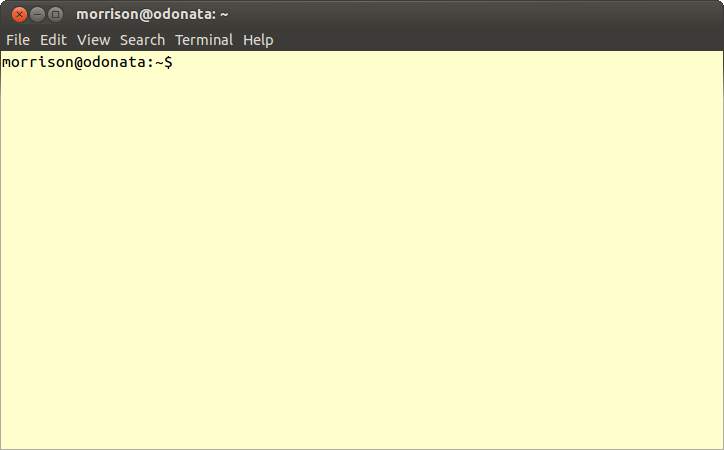You are probably used to running a computer with a graphical user interface (GUI) that gives you a desktop and icons to work with using your mouse and keyboard.
You likely run Windoze, MacOSX, or you may be running a Linux GUI on your machine. The GUI allows you to communicate with the operating system, which is the master program of your computer that manages such things as running applications and maintaining your file system.
In this book, we will study the Linux operating system in its command-line guise. You will control the computer by entering commands into a text window called a terminal window. Typically they look something like this.

The name “terminal” name harkens back to the days when you had an actual appliance on your desk consisting of a (heavy) CRT screen and keyboard that was connected to a computer elsewhere. Your terminal window is just a software version of this old appliance. You will enter commands into this window to get the remote machine you are communicating with to perform various tasks.
The text string morrison@odonata appearing in the
window is called the prompt. Its presence indicates that the
computer is waiting for you type in a command. Your prompt will likely
be different.